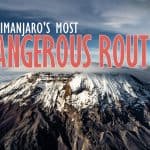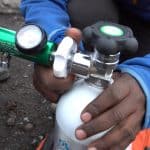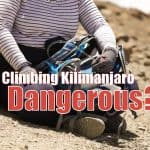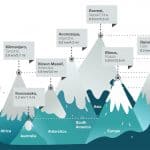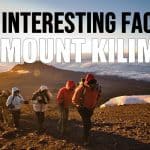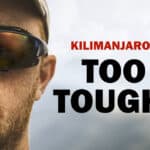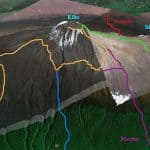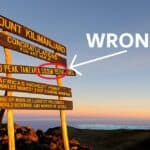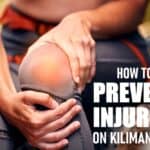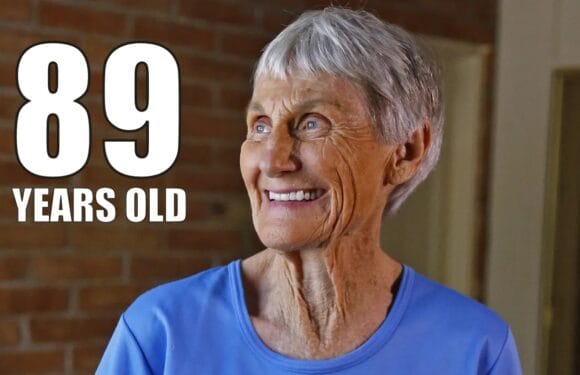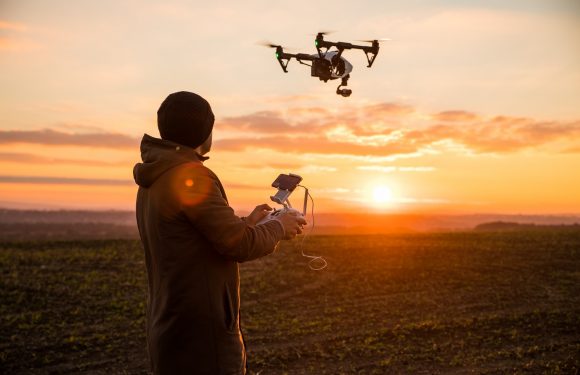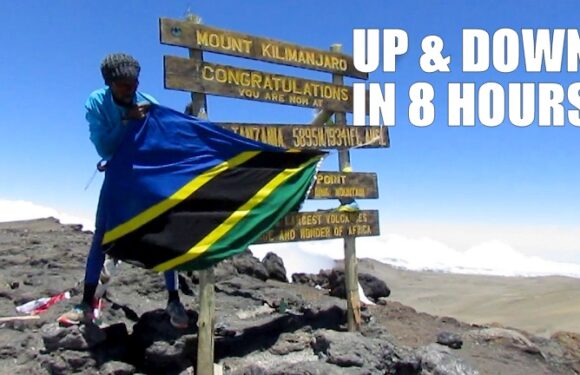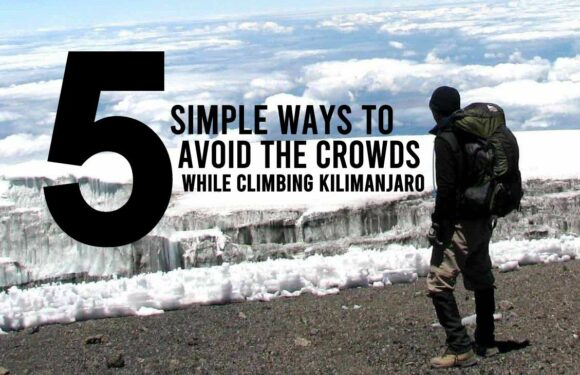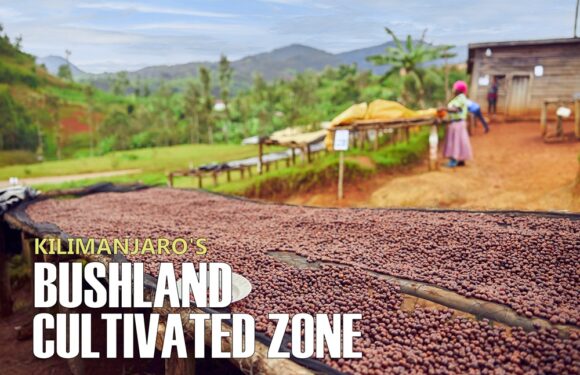Do you need to use oxygen on Kilimanjaro?
At all altitudes, the percentage of oxygen in the air is constant at 21%.
However, the number of oxygen molecules changes due to air pressure. At sea level, air is compressed, squeezing oxygen molecules together, making it denser. But at higher altitude, air pressure is lower and oxygen molecules spread apart, making air thinner.
The low oxygen at high altitude is what causes altitude sickness, or acute mountain sickness (AMS).
Symptoms of altitude sickness begin to arise at high altitude, starting at around 8,000 feet and continue to become more pronounced the higher you go. The cause of acute mountain sickness is not understood but is clearly related to hypoxia and some other factors such as effort and innate susceptibility.
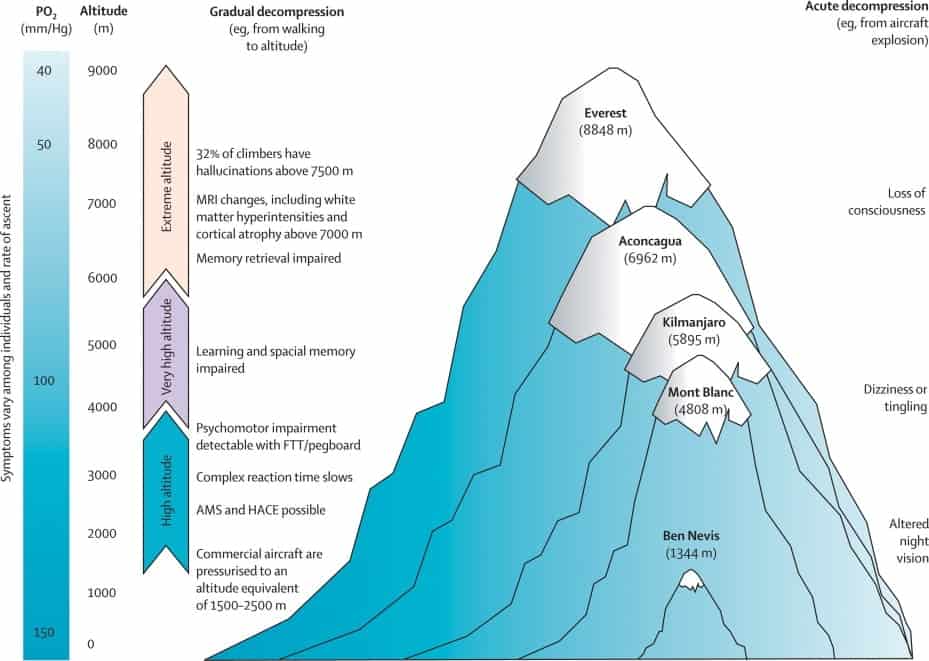
Altitude sickness, or acute mountain sickness (AMS) is the main cause of fatalities while climbing Kilimanjaro. High altitude pulmonary oedema and high altitude cerebral oedema are two fatal forms of serious AMS that can strike on the mountain. Therefore, many Kilimanjaro operators bring oxygen as a precaution in order to treat climbers who have developed moderate or severe altitude sickness.
Ultimate Kilimanjaro® carries oxygen for emergency purposes on every climb. This oxygen is only used to treat a stricken climber in conjunction with immediate descent. In other words, it is administered only in a rescue scenario and as a part of evacuation off the mountain.
There are some operators who advertise the use of a “personal oxygen system” to assist climbers on Mount Kilimanjaro. This is not standard practice.
You do not need supplemental oxygen to climb Kilimanjaro.
Supplementary oxygen is normally only used at extreme altitudes above 23,000 feet. Heights greater than 26,000 feet are inhospitable for sustained human life. These elevations are sometimes referred to as the ‘Death Zone.’ The top of Kilimanjaro is 19,341 feet tall. Therefore, supplementary oxygen is very rarely used on the peak.
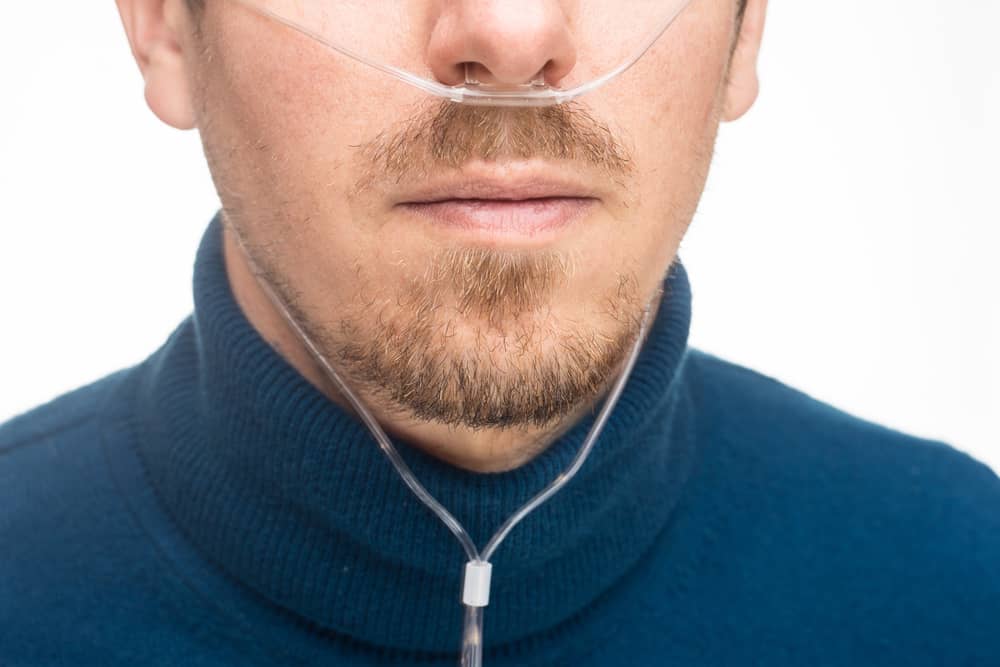
There are good reasons why using oxygen in this manner is NOT advised even if it is available (besides the fact that you would look more like a hospital patient than a mountain trekker).
When one develops symptoms of moderate or severe altitude sickness, it is not because the body is trying to make it unpleasant for the climber without merit. It is because the body recognizes that he or she is unable to function at the current altitude and does not want the person to ascend any higher. The body is sending a signal – STOP CLIMBING. Not listening to the body is how most people get into trouble on the mountain.
Using oxygen to climb ignores the body’s clear message to maintain or descend altitude. By using supplemental oxygen, a climber has effectively stopped his or her body’s attempts at acclimatization by raising the oxygen content of the air being breathed. The use of supplemental oxygen delays or stops altogether the acclimatization process. The body no longer feels the need to make adaptations to a low oxygen environment because the supplemental oxygen provides a relatively oxygen rich environment.
And while the body was unable to acclimatize to the current altitude, the oxygen user has made things even worse by climbing even higher. It’s a dangerous situation to be dependent on the oxygen supply to remain healthy.
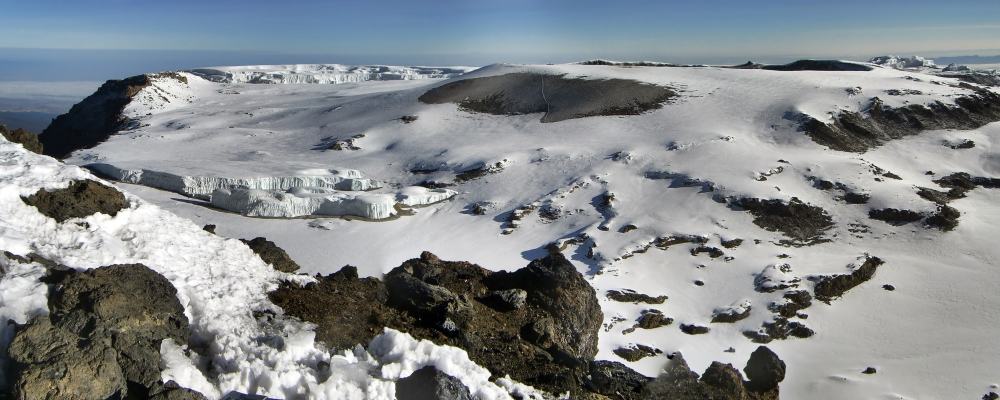
Lastly, what is point of climbing Kilimanjaro with supplemental oxygen?
The difficulty of Kilimanjaro lies with its altitude. As a trek, it is not difficult by hiking standards if you remove the challenge of high altitude. While some people climb Kilimanjaro just to say they did it, regardless of the manner in which it was done, it is not much of an achievement if you put the mountain at sea level. And this is what supplemental oxygen does.
The bottom line is that supplemental oxygen is potentially dangerous when used to climb higher, is wholly unnecessary on Kilimanjaro, and is against the spirit and challenge of climbing Kilimanjaro. You do not need oxygen to summit Kilimanjaro and it should not be used.
__________
See Why Does Acute Mountain Sickness Occur?
See Are You Afraid of High Altitude?
See Can Training with an Altitude Mask Help Me Climb Kilimanjaro?

